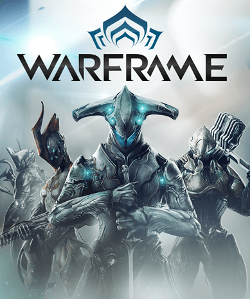Warframe’s Free-to-Play Philosophy: A Benchmark for Ethical Monetization
Warframe stands as a shining example of how to implement a free-to-play (F2P) business model ethically and successfully. In an industry often criticized for predatory monetization, pay-to-win mechanics, and aggressive nickel-and-diming, Digital Extremes has consistently upheld a player-first philosophy that has earned them immense loyalty and a passionate community. For over a decade, Warframe has demonstrated that a truly free-to-play game, where every single item can be acquired through gameplay, can not only survive but thrive, setting a high bar for player respect and sustained engagement.
1. The “Play to Earn” Philosophy: Every Item Acquireable In-Game
The cornerstone of Warframe’s ethical monetization is its unwavering commitment to allowing players to acquire virtually all content through sheer gameplay and dedication.
- Warframes & Weapons: Every Warframe, weapon, companion, and mod can be obtained by farming specific resources, completing missions for blueprints, or dropping from enemies/bosses. There is no Warframe or weapon locked behind a paywall.
- Blueprint System: Most new items begin as blueprints, which players then craft using resources gathered from missions. This ensures players engage with various game modes to progress.
- No “Power Gating”: Unlike many F2P games, there are no artificial barriers or “energy systems” that limit how much you can play or progress unless you pay. Players can grind as much as they want, whenever they want.
- Regular Content Updates: Digital Extremes consistently releases substantial free content updates, including new Warframes, weapons, story quests, and entire open-world zones, all accessible to F2P players on day one.
- Impact: This core philosophy immediately fosters player trust, as they know their time and effort will eventually yield any desired item, rather than being forced into purchases.
2. Platinum: The Premium Currency and Its Unique Tradeability
Platinum is Warframe’s premium currency, typically purchased with real money. However, its unique implementation makes it incredibly F2P-friendly:
- Primary Uses: Platinum is used for:
- Cosmetics: Skins, color palettes, armor sets, sigils – purely aesthetic items that allow for deep “FashionFrame” customization. These are the main draw for many paying players.
- Inventory Slots: Warframe slots and weapon slots are finite. Platinum can be used to expand these, addressing a quality-of-life need for hoarders and collectors.
- Accelerated Progression: Players can use Platinum to instantly buy Warframes or weapons that they could otherwise farm and craft. This is a “convenience” purchase, not a “necessity.”
- Prime Access: A rotating bundle for real money that offers immediate access to the latest Prime Warframe and weapons, along with exclusive cosmetics and Platinum. This is designed for players who want to support the game and get immediate gratification.
- Player-to-Player Trading: This is the game-changer. Platinum can be traded between players. This means F2P players can farm rare items (e.g., Prime parts from Void Fissures, rare mods, Riven mods) and sell them to other players for Platinum.
- Player-Driven Economy: Websites like Warframe.market have emerged, facilitating this player-driven economy. This allows dedicated F2P players to accumulate significant amounts of Platinum without spending a single cent, effectively unlocking all cosmetic and convenience options for free.
- Impact: The tradeability of Platinum completely bypasses traditional F2P limitations, turning the premium currency into something obtainable through gameplay, making Warframe a truly “free-to-play, pay-for-convenience/cosmetics” model.
3. Respecting Player Time and Engagement with the Community
Digital Extremes’ success is also deeply rooted in its strong relationship with its community:
- Developer Transparency: They hold regular “Devstreams” where they discuss upcoming content, address player feedback, and showcase works-in-progress. This level of transparency builds immense trust.
- Listening to Feedback: The developers actively listen to community feedback, often implementing changes or addressing concerns raised by players. This makes players feel heard and valued.
- Lack of Aggressive Marketing/Pop-ups: Unlike many F2P titles that constantly barrage players with tempting offers, Warframe’s in-game store is unobtrusive. Purchases are opt-in, not forced.
- Longevity and Updates: The decade-plus of continuous content updates, driven by a dedicated team, shows a long-term commitment to the game and its players.
- Impact: This commitment fosters a positive player experience, leading to higher retention rates and word-of-mouth recommendations, which are invaluable for a live-service game.
4. The Enduring Legacy as an F2P Model:
Warframe’s model proves that a robust F2P game does not need to resort to exploitative practices to be profitable. It demonstrates:
- Player Trust Leads to Profit: By respecting players’ time and giving them agency over acquisition, players are more willing to spend on cosmetics or convenience items to support a game they genuinely enjoy.
- Content is King: Regular, high-quality free content keeps players engaged and attracts new ones.
- Community is Crucial: A strong, valued community becomes an active participant in the game’s success.
In an industry constantly evolving its monetization strategies, Warframe remains a steadfast example of ethical F2P design. Its continued success solidifies its legacy not just as a great game, but as a blueprint for how developers can build strong, lasting relationships with their player base through transparency, generosity, and a shared passion for the game.
